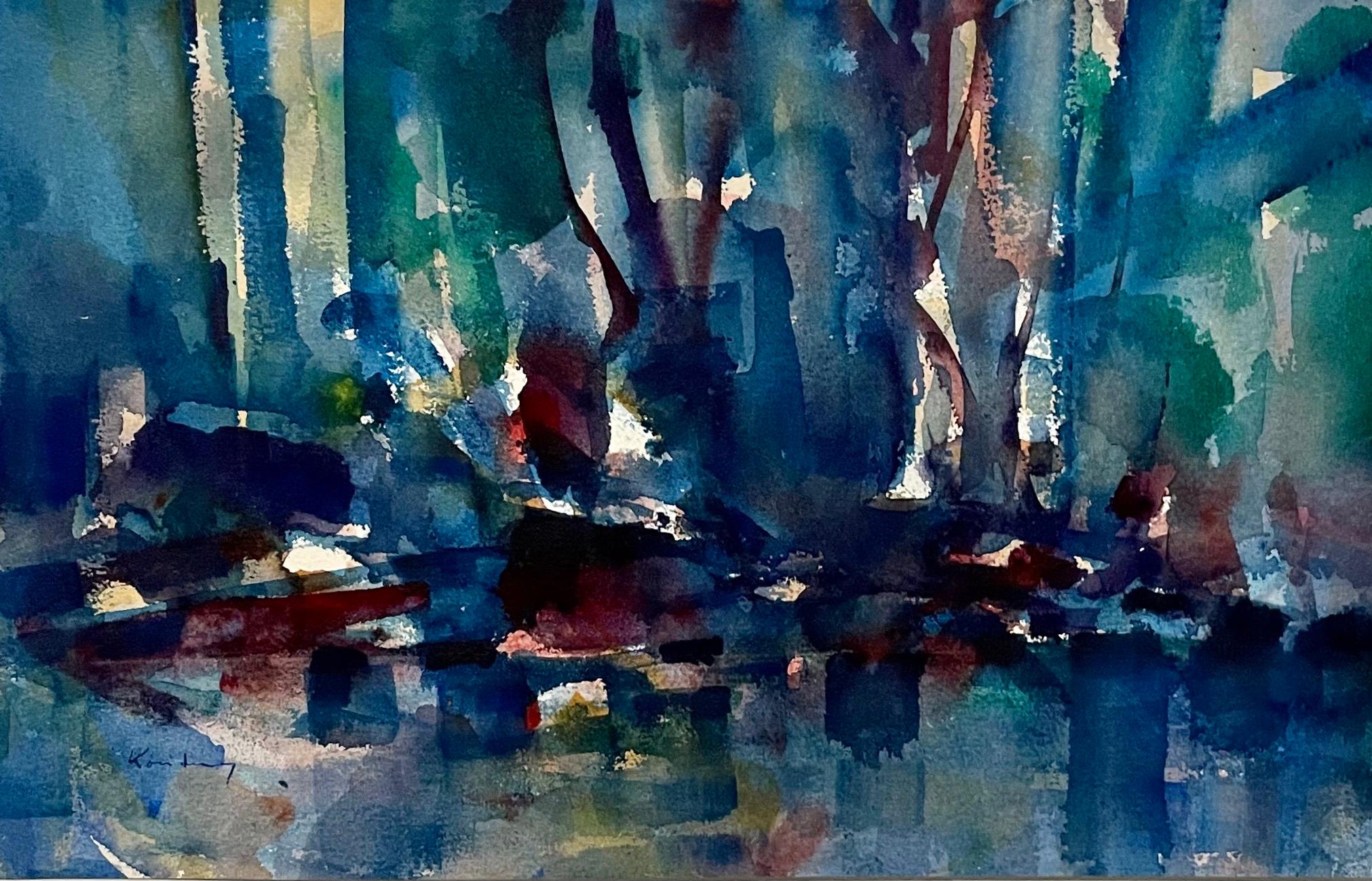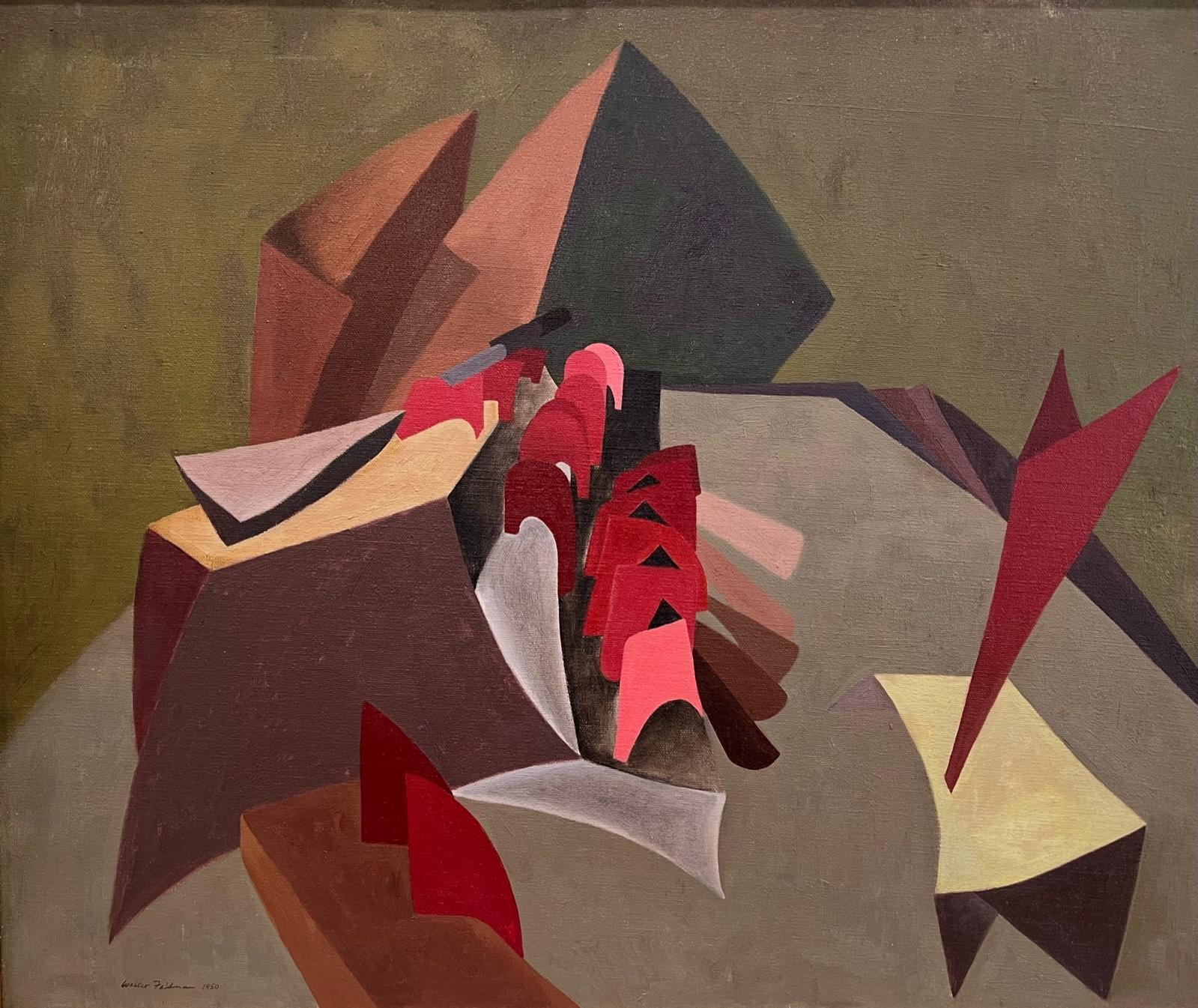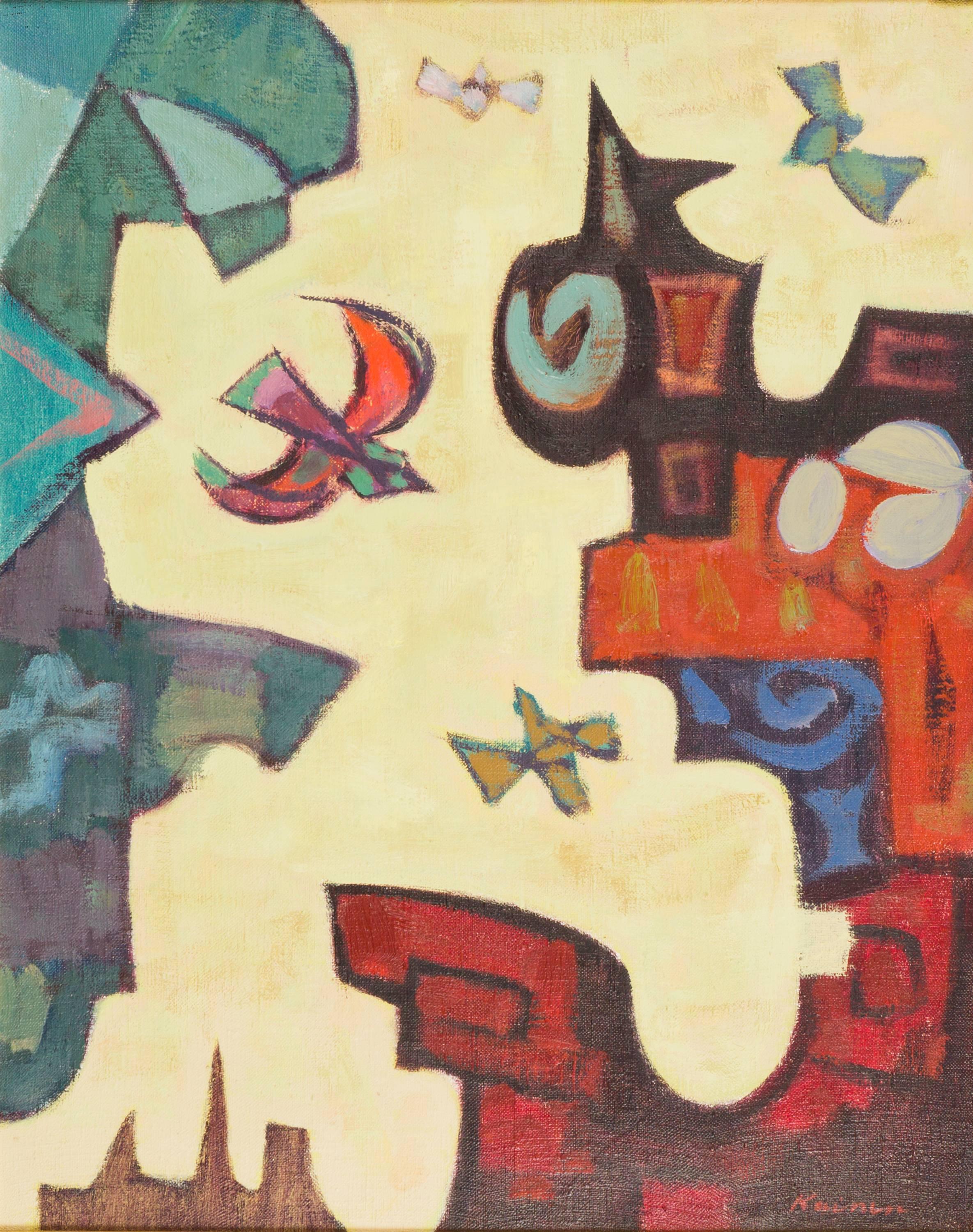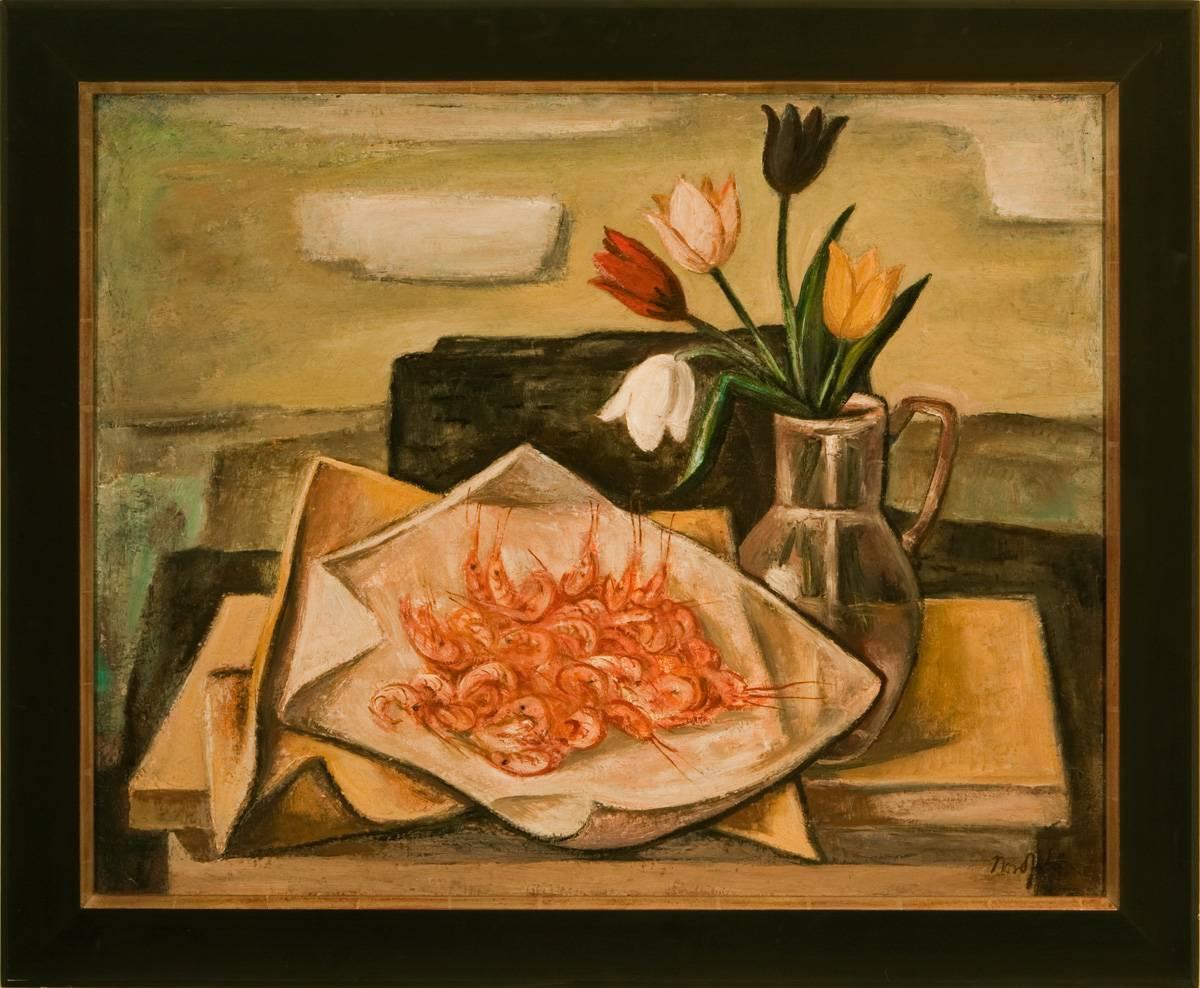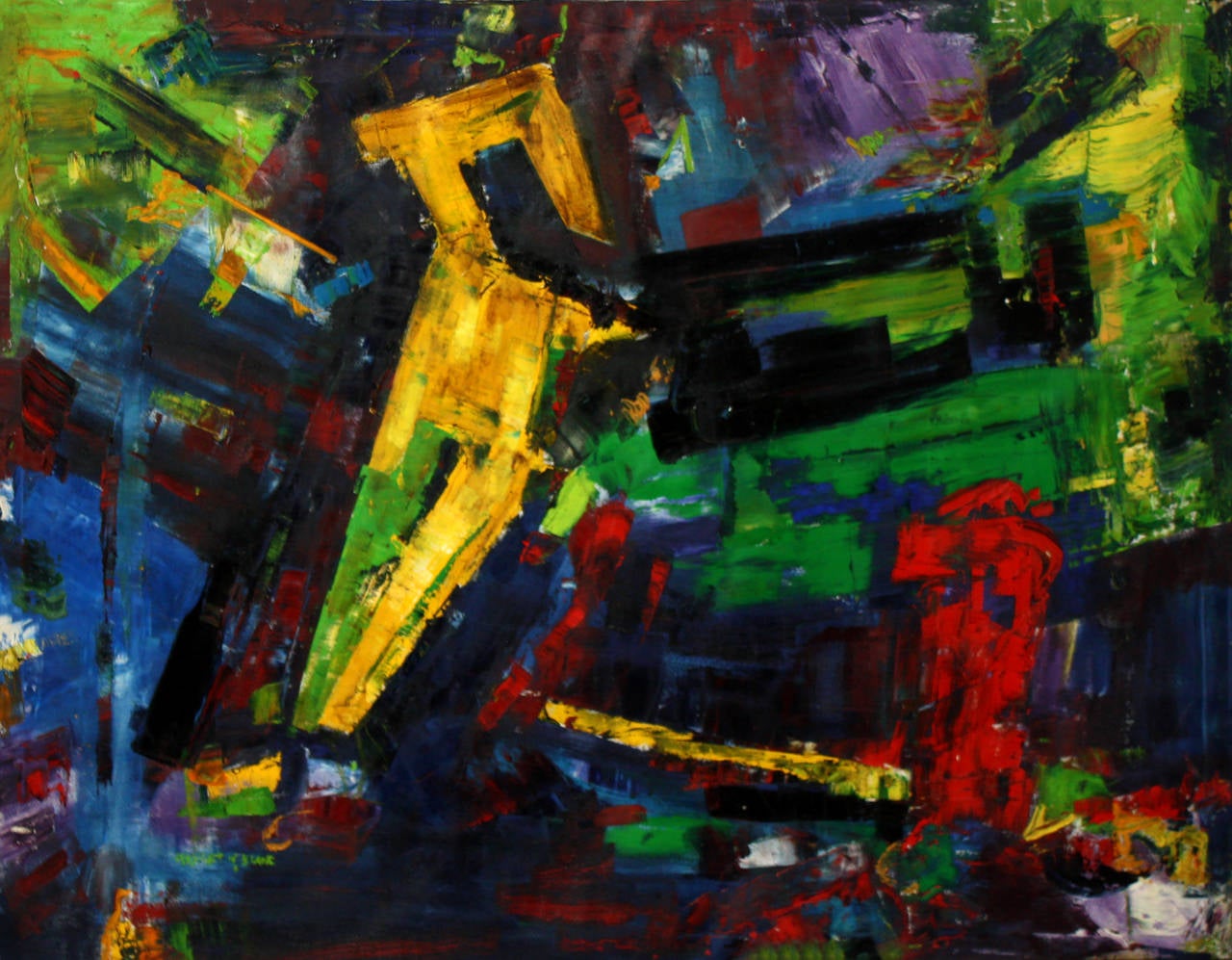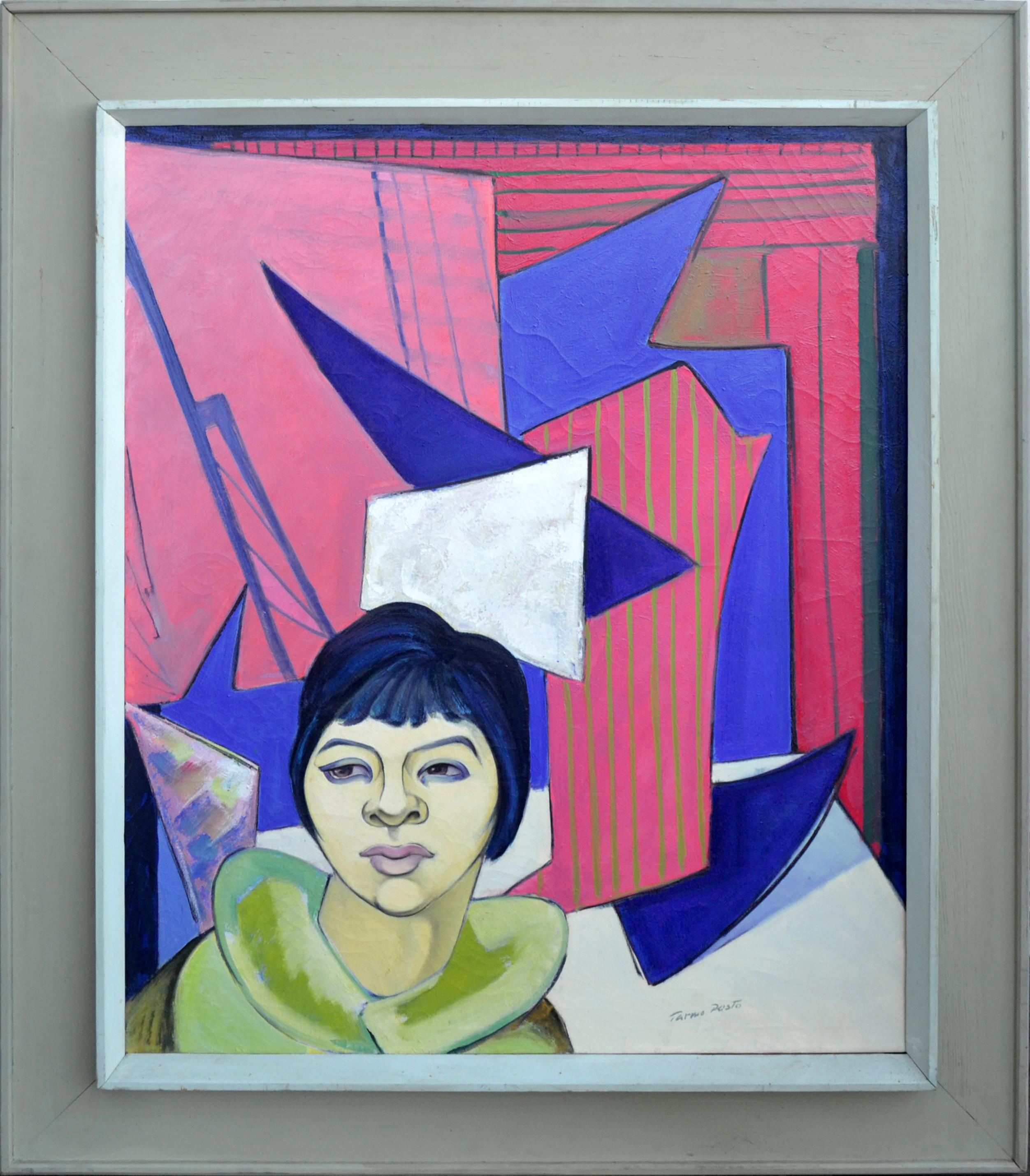
Receding Planets
View Similar Items
1 of 4
Werner DrewesReceding Planets1945
1945
About the Item
- Creator:Werner Drewes (1899-1985, American)
- Creation Year:1945
- Dimensions:Height: 24 in (60.96 cm)Width: 18 in (45.72 cm)
- Medium:
- Movement & Style:
- Period:
- Condition:
- Gallery Location:New York, NY
- Reference Number:1stDibs: LU1522438052
You May Also Like
- Leaves, Modernist Southwestern Abstract, Still Life Painting by Female ArtistLocated in Doylestown, PA"Leaves" is a 30 x 24 inches, oil on canvas painting by American modernist and surrealist, female artist Peter Miller. The work is signed and titled on verso, and painted in a vibran...Category
1940s American Modern Abstract Paintings
MaterialsCanvas, Oil
- The Alchemist Dream, Cultural and Spiritual Commentary, Southwestern ModernismLocated in Doylestown, PA"Alchemist Dream" is a large mural, 72 x 96 inches, oil on canvas painting by American modernist and surrealist, female artist Peter Miller. The work is painted in a vibrant color pa...Category
1960s American Modern Abstract Paintings
MaterialsCanvas, Oil
- Spiritual and Cultural Abstract by Female American Modernist, January 1939Located in Doylestown, PA"January 1939" is a 18.25 x 23.25 inches, oil on canvas painting by American modernist and southwestern, female artist Peter Miller. The painting is signed, titled, and estate stamped #202053 on verso. The painting has been conserved and inspected by conservation specialist, Gratz Gallery & Conservation Studio, Inc. Exhibition history: Peter Miller, Forgotten Woman of American Modernism, Gratz Gallery & Conservation Studio, Doylestown, Pennsylvania, 2022. Provenance: Estate of the Artist; Private Collection, Saugerties, New York; Gratz Gallery & Conservation Studio, Doylestown, Pennsylvania. Image: Peter Miller in Her Studio Julien Levy Gallery Records, Philadelphia Museum of Art, Library and Archives In the summer of 2021, "Peter Miller, Forgotten Woman of American Modernism", a fully illustrated, comprehensive, and first ever published monograph on the artist was released, with a text written by art historian Francis M. Naumann, preface by publisher Paul Gratz, and an essay by artist Bill Richards...Category
1930s American Modern Abstract Paintings
MaterialsCanvas, Oil
- Modernist Abstract Expressionist Watercolor Painting Bauhaus Weimar Pawel KontnyBy Pawel KontnyLocated in Surfside, FLAbstract watercolor composition bearing the influence of the earlier color-block compositions of Paul Klee. Pawel August Kontny, (Polish-German-American artist) He was born in Laurahuette, Poland, in 1923, the son of a wealthy pastry shop owner. In 1939 he began studying architecture in Breslau where he was introduced to the European masters and to the work of some of the German Expressionists, soon afterward banned as "degenerate artists" and removed from museums throughout Germany by the Nazi regime. His studies were interrupted by World War II. Drafted into the German army, traveling in many countries as a soldier, he sketched various landscapes but in 1945, he was captured and held as a prisoner of war in Italy. After the war, he studied at the Union of Nuremberg Architects to help design buildings to replace ones destroyed in the war. He recorded his impressions of the local population and the landscapes through his watercolors and drawings. Pawel Kontny thereafter moved to Nuremberg, Germany, becoming a member of the Union of Nuremberg Architects and helping to rebuild the city's historic center. He soon decided to concentrate on his professional art career. He married Irmgard Laurer, a dancer with the Nuremberg Opera. Pavel Kontny 's career as an artist was launched with his participation in an all German exhibition, held at the Dusseldorf Museum in 1952. He held one-man shows in Germany, Switzerland and the United States. During his trip to the United States in 1960, Kontny became instantly enamored with Colorado, and decided to relocate to Cherry Hills with his wife and two children. He quickly established himself in the local art community, being affiliated for a time with Denver Art Galleries and Saks Galleries. His subject matter became the Southwest. During this time he received the Prestigious Gold Medal of the Art Academy of Rome. His extensive travel provided material for the paintings he did using his hallmark marble dust technique. he also worked equally in pastel, watercolor, charcoal and pencil-and-ink. in a style which merged abstraction and realist styles, influenced by Abstract Expressionist painting and South Western American landscapes. In the early 1960s he was one of only a few European-born professional artists in the state, a select group that included Herbert Bayer (1900-1985), a member of the prewar Bauhaus in Weimar and Dessau, Germany, and Roland Detre (1903-2001), a Hungarian modernist painter. As a Denver, Colorado resident, Pavel Kontny exhibited at galleries and museums throughout the United States, Germany and Japan. There, he was inspired by frequent trips to Native American pueblos in the Southwest, as well as by the study of the Plains Indians of Montana and Wyoming. Over the years Kontny had a number of students and generously helped young artist by hosting exhibitions at his Cherry Hills home. For many years he generously donated his paintings to support charitable causes in Denver. Influences during his European years included German pastelist C.O. Muller, German Informel painter Karl Dahmen and Swiss artist, Hans Erni. In the early 1950s his painting style showed the influence of the Die Brücke (The Bridge), a group of German expressionist artists formed in Dresden in 1905 who had a major impact on the evolution of modern art in the twentieth century in Germany. By the middle of the decade his style incorporated more referential abstraction and total abstraction, resulting in part from his study of Hans Hartung, a German artist based in Paris who exhibited his gestural abstract work in Germany. The American moon landing in 1969 inspired Paul Kontny...Category
20th Century American Modern Landscape Paintings
MaterialsCanvas, Oil
- The OrchestraLocated in Los Angeles, CAThe Orchestra, 1950, oil on canvas, 21 ½ x 25 3/4 inches, signed and dated lower left, labeled verso “Brown University, Trustee, The Walter Feldman Trus...Category
Mid-20th Century American Modern Abstract Paintings
MaterialsCanvas, Oil
- Midnight Dance, Modernist Southwestern Abstract SkyscapeLocated in Doylestown, PA"Midnight Dance" is a 18 x 24 inches, oil on canvas, abstract painting by American modernist and surrealist, female artist Peter Miller. The work is titled and estate stamped #202057 on verso. The painting has been conserved and inspected by conservation specialist, Gratz Gallery & Conservation Studio, Inc. Exhibition history: Forgotten Woman of American Modernism, Gratz Gallery & Conservation Studio, Doylestown, Pennsylvania, 2022. Provenance: Estate of the Artist; Private Collection, Saugerties, New York; Gratz Gallery & Conservation Studio, Doylestown, Pennsylvania. Image: Tilano Montoya and Peter Miller, Courtesy Los Alamos History Museum Archive, Patrick Burns Collection Peter Miller was an artist, a philanthropist, a mystic, and a woman of endless passion for nature and adventure. She and her husband Earle split their time between Pennsylvania and their ranch in Espanola, New Mexico. Bordering the San Ildefonso Pueblo and developing a trusted friendship with the Native Americans, she was greatly inspired by their culture and rituals, as well as by the deeply rooted love for their land. "Midnight Dance" was born out of the inspiration she received through her friendship with the local Native Americans and the deep respect she held for the local people of the Pueblo. Peter's admiration for the beauty of the terrain evoked a sensuality in her work that was represented in her focus on spirituality through deep color saturation. Paul Gratz writes in the first ever published monograph on the artist: "Miller’s technique was unique. In some of her paintings, she textured the ground to mimic canyon walls. In others, she used sgraffito and applied thin veils of color that she would then skillfully and partially rub off with rags. One small area of the canvas can contain six to eight different colors. The yellows and orange underneath provide a glow of spirituality to many of her canvases. The compositions are deliberate and she had a sophisticated knowledge of color. There are paintings within the painting, layers upon layers." American artist Peter Miller (1913-1996) was born Henrietta Myers in Hanover, Pennsylvania. She began using the name Peter Miller after concluding her studies at the Pennsylvania Academy of the Fine Arts in 1934 and her marriage to fellow artist and Academy student Earle Miller in 1935. She felt collectors and critics would take her paintings more seriously if she was identified as a male. In childhood, Henrietta and her best friend Ruth picked fictitious nicknames for themselves, and Henrietta reportedly decided upon the name Peter because she liked the idea that it was derived from the Greek word for “rock” or “stone”. Drawn to being one with the natural world would prove to be an essential inspiration to her creativity throughout her life. Miller is classified as an American Modernist, a reputation she earned for having shown at the prestigious gallery and premiere showcase for Surrealist painting of Julien Levy in New York in the 1940s. Reviewers of her exhibitions noted the unmistakable influence of the artists Joan Miró, whose work she owned and whom she knew, and Arthur Carles, whom she studied with, and sources in Native American culture, which came from sharing time between her home state of Pennsylvania and New Mexico. Peter and her husband Earle considered New Mexico their spiritual home, and in 1935 they built a ranch in Española, about 25 miles north of Santa Fe. Being neighbors of the indigenous people of the Tewa Pueblo, their crafts and religious beliefs fascinated Peter and the reliance of Native Americans upon the land and the animals permeated her work for most of her career. In the summer of 2021, "Peter Miller, Forgotten Woman of American Modernism", a fully illustrated, comprehensive, and first ever published monograph on the artist was released, with a text written by art historian Francis M. Naumann, preface by publisher Paul Gratz, and an essay by artist Bill Richards...Category
1960s American Modern Abstract Paintings
MaterialsCanvas, Oil
